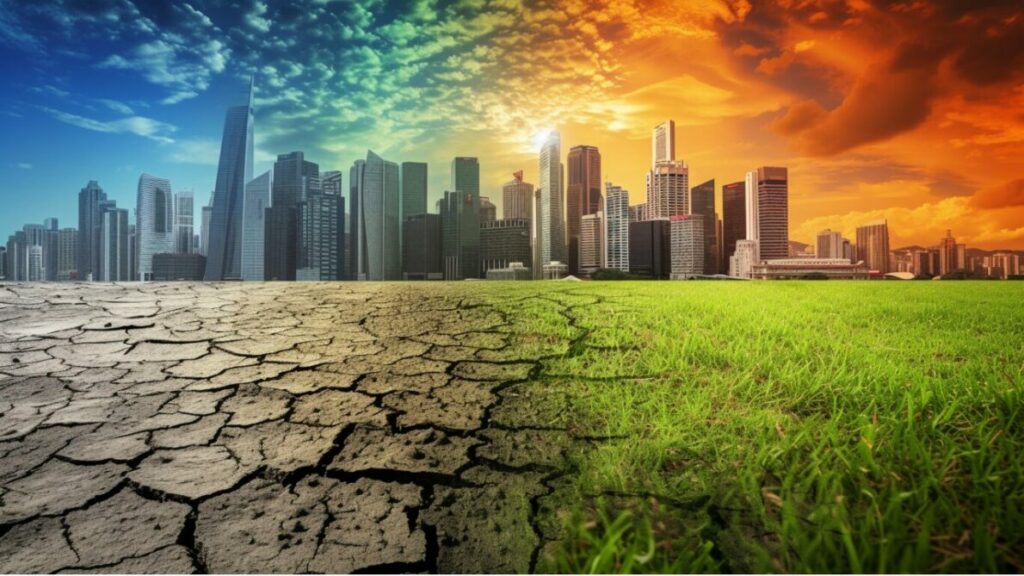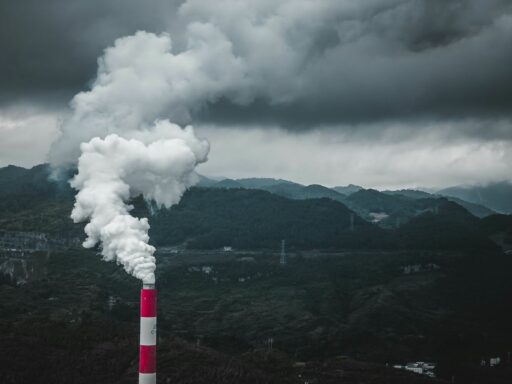In today’s constantly changing global market, firms face enormous difficulties that jeopardize supply chain stability. Climate change, geopolitical conflicts, and technology shocks have highlighted the importance of climate resilience methods. Building climate-resilient supply chains is no longer a choice; it is a necessary component of sustainable business operations.
A climate resilient supply chain is intended to anticipate, prepare for, and respond to a variety of climate related disturbances. Extreme weather occurrences, evolving regulatory environments, and unexpected global crises are all part of this. Companies that include climate adaption, risk reduction, and flexible logistics into their operations may increase their resilience and assure long-term success.
This article discusses the significance of climate resilient supply chains, the tools and strategies available for climate adaptation, policy shifts such as the EU’s Corporate Sustainability Due Diligence Directive (CSDDD), and real-world examples, such as IKEA’s approach to sourcing drought-resistant materials.

Understanding Climate-Resilient Supply Chains
In modern uncertain world, the notion of climate resilient supply chains is critical to company continuity and long-term success. Climate-resilient supply chains are those that can predict, respond to, and recover swiftly from the consequences of climate-related disturbances. Floods, wildfires, hurricanes, heatwaves, droughts, and other extreme weather phenomena have a growing influence on global logistics, material sourcing, and delivery timetables.
These techniques differ from standard risk management tactics in that they are proactive rather than reactive. Companies must now analyze how exposed their logistics, suppliers, warehouses, and manufacturing sites are to environmental stresses. This entails mapping out the complete supply chain network and identifying weak points that might be vulnerable to climate hazards. Businesses that identify these weaknesses might begin to establish contingency plans and invest in climate-proofing their operations.
Long-term adaptation is essential to any climate-resilient supply chain. This includes diversifying suppliers to minimize over-reliance on a single location, including climate forecasting tools for real-time decision-making, and utilizing climate risk data to influence procurement and shipping plans. Companies that invest in this type of adaptation are better prepared to deal with not only natural disasters, but also climate-related legislative developments and consumer demands of sustainability. Finally, understanding and developing climate resilient supply networks means protecting your firm from future volatility. It’s a forward-thinking approach that combines financial performance with environmental responsibility—essential in a world where climate change is no longer a distant concern, but a pressing issue.
The Importance of Climate-Resilient Supply Chains
The rising frequency and severity of climate-related catastrophes have revealed flaws in global supply systems. Floods, droughts, and wildfires may all interrupt production, cause delays in shipments, and increase prices. For example, the 2021 floods in Europe caused severe delays to industry and logistics networks, highlighting the importance of climate-resilient systems.
climatic adaptation entails changing business practices to withstand and recover from climatic impacts. This involves diversifying supply bases, investing in robust infrastructure, and implementing environmentally friendly methods. Companies that focus on risk mitigation can detect possible hazards and execute solutions to reduce their effect. Implementing agile logistics enables firms to adapt quickly to disturbances. This flexibility allows supply networks to adjust to changing conditions while ensuring continuity and customer satisfaction.
Tools for Climate Adaptation: Leveraging AI and Technology
Advances in technology have given businesses tools to improve their climate-resilient plans. AI plays an important role in climate adaptation by providing predictive analytics, real-time monitoring, and decision-making assistance.
AI-powered platforms can examine large datasets to predict future disruptions like harsh weather or supply shortages. This enables businesses to proactively develop risk reduction strategies. AI, for example, may boost agile logistics by rerouting cargo in real-time to ensure timely delivery. Furthermore, AI simplifies scenario planning, allowing organizations to model numerous interruption situations and devise contingency plans. This proactive strategy improves the entire climate-resilience architecture of supply networks.

Policy Shifts: Navigating the EU’s Corporate Sustainability Due Diligence Directive (CSDDD)
Regulatory frameworks are being developed to address environmental and social problems in supply chains. The European Union’s CSDDD requires businesses to identify and solve human rights and environmental issues in their operations and supply networks.
To comply with CSDDD, organizations must do complete due diligence, implement preventative measures, and develop grievance procedures. This supports climate adaption efforts by encouraging sustainable behaviors and openness.
Adherence to such standards assures not only legal compliance, but also improves brand reputation and stakeholder confidence. Integrating CSDDD criteria into supply chain management demonstrates a commitment to climate-resilient and ethical operations.
Case Study: IKEA’s Approach to Drought-Resistant Material Sourcing
IKEA takes a proactive approach to creating climate-resilient supply networks. Recognizing the influence of climate change on raw material supply, IKEA has made investments in drought-resistant materials to ensure long-term sustainability and continuity.
IKEA exhibits excellent climate adaption by working with suppliers to grow resilient crops and using repurposed materials. This method not only ensures the availability of vital supplies, but it also coincides with the company’s environmental objectives.
IKEA’s dedication to risk reduction is demonstrated by its investments in sustainable forestry and renewable energy initiatives. These approaches lessen reliance on vulnerable resources and improve the overall resilience of their supply chain.
Strategies for Building Climate-Resilient Supply Chains
To enhance climate-resilient supply chains, businesses can implement the following strategies:
- Diversify Suppliers: Engage with multiple suppliers across different regions to reduce dependency on a single source.
- Invest in Infrastructure: Upgrade facilities to withstand extreme weather events, ensuring operational continuity.IKEA
- Adopt Sustainable Practices: Implement eco-friendly processes that reduce environmental impact and support climate adaptation.
- Enhance Visibility: Utilize technology to gain real-time insights into supply chain operations, facilitating swift responses to disruptions.
- Develop Contingency Plans: Prepare for potential disruptions by establishing clear protocols and backup plans.
- Engage Stakeholders: Collaborate with suppliers, customers, and regulators to align on sustainability goals and expectations.
- Monitor Regulatory Changes: Stay informed about policy developments, such as the CSDDD, to ensure compliance and adapt strategies accordingly.
- Train Workforce: Educate employees on sustainability practices and the importance of climate-resilient operations.
- Invest in Research and Development: Explore innovative materials and technologies that support climate adaptation.
- Measure and Report: Track progress on sustainability initiatives and communicate results to stakeholders transparently.
Conclusion
Building climate-resilient supply chains is critical for businesses seeking to succeed in an era defined by environmental uncertainty and regulatory complexity. Companies may improve their resilience and long-term performance by embracing climate adaptation, employing effective risk mitigation techniques, and adopting agile logistics.
Proactive strategies, such as embracing AI technology and adhering to standards like the CSDDD, help firms handle upheavals efficiently. Real-world examples, such as IKEA’s sustainable procurement policies, demonstrate the real benefits of investing in climate resilience techniques. Implementing these measures not only protects operations, but also helps to create a more sustainable and fair global economy. As climate issues worsen, the need for climate-resilient supply chains becomes increasingly urgent.
Comparison Table: Traditional vs. Climate-Resilient Supply Chains
| Feature / Strategy | Traditional Supply Chains | Climate-Resilient Supply Chains |
|---|---|---|
| Risk Management | Reactive—address issues after disruption | Proactive—focus on risk mitigation and climate forecasting |
| Climate Adaptation | Rarely integrated | Central to supply chain strategy |
| Technology Use | Basic ERP & tracking systems | AI-powered, real-time monitoring tools |
| Supplier Network | Limited geographic diversity | Diversified to reduce climate-related vulnerabilities |
| Regulatory Compliance | Minimum legal adherence | Aligned with ESG, CSDDD, and other global frameworks |
| Logistics | Rigid, slow to adapt | Highly agile logistics that respond to disruptions fast |
| Sustainability Focus | Not a priority | Integrated into sourcing, packaging, and operations |
| Cost Structure | Low upfront cost, high long-term risk | Investment-based, lower risk and cost over time |
| Stakeholder Engagement | Low visibility and transparency | Transparent, accountable, and collaborative |








